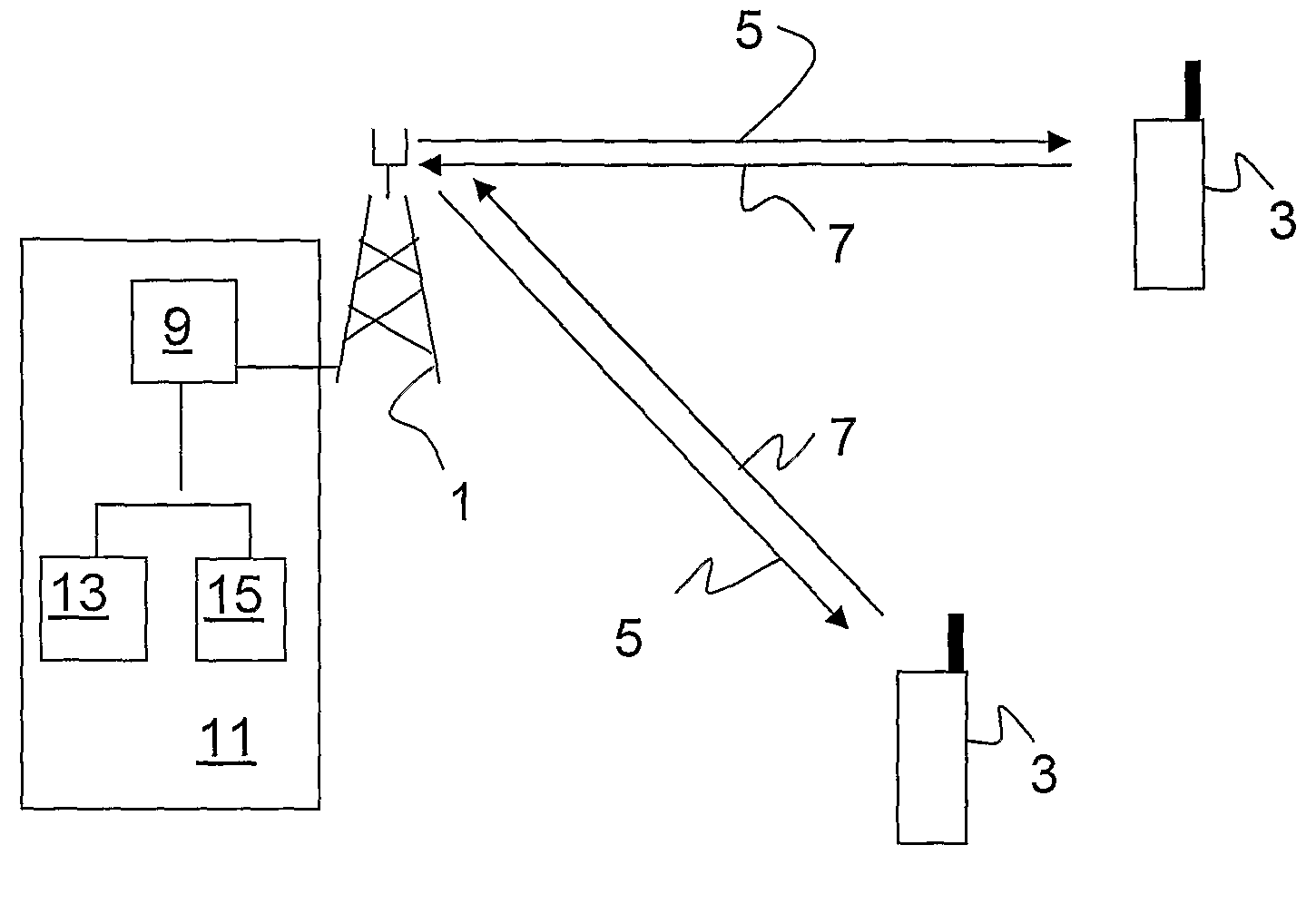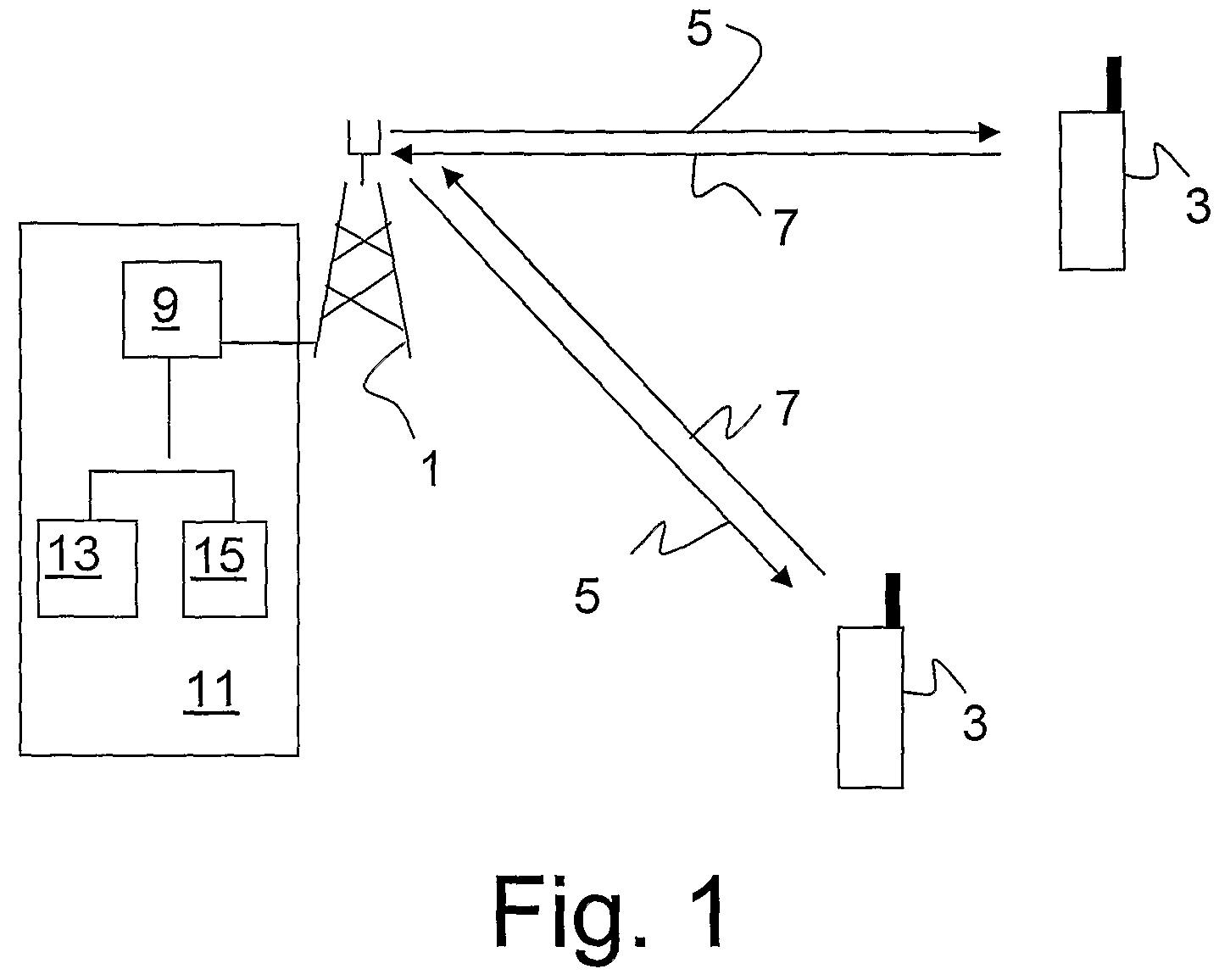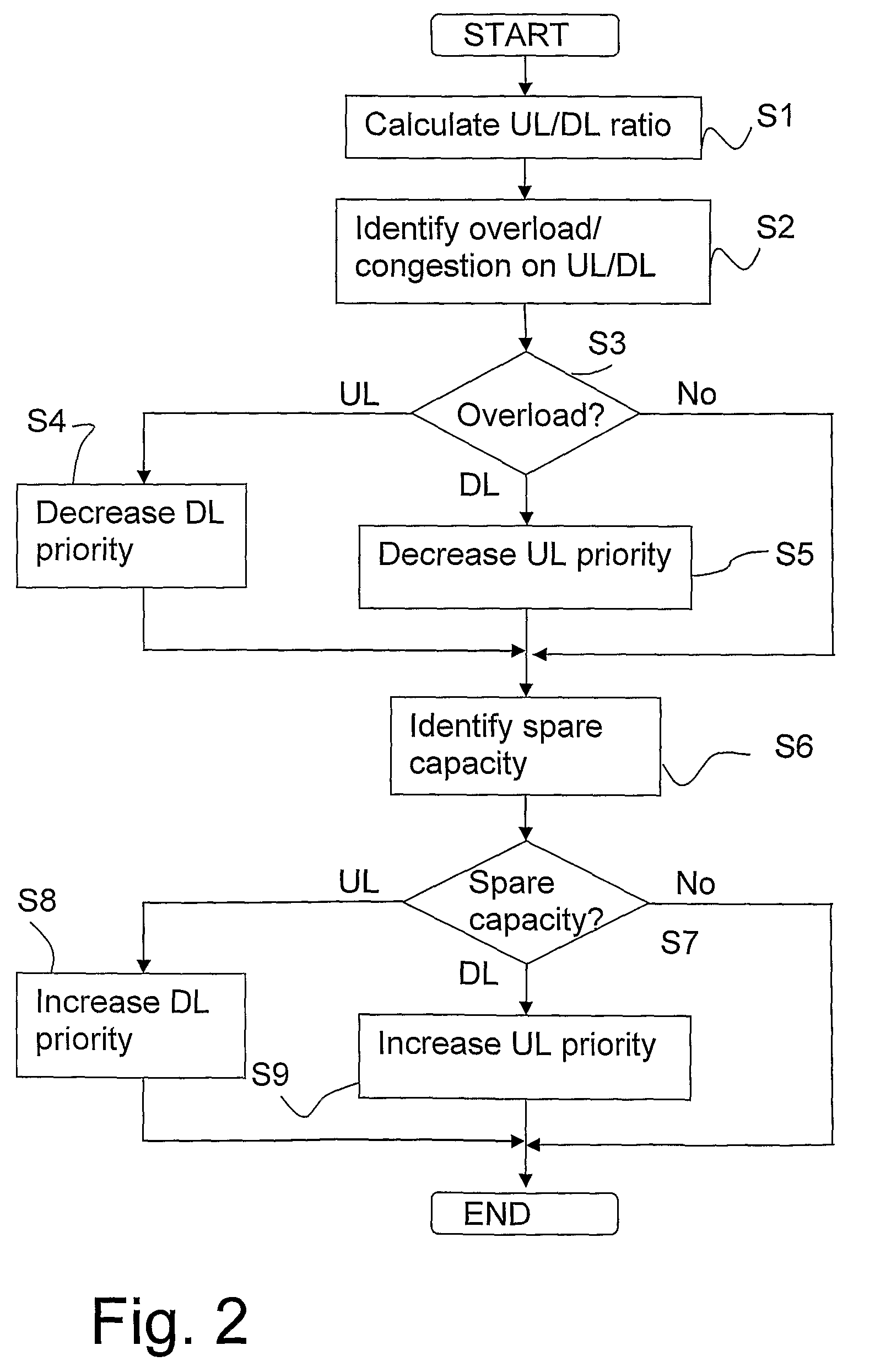Method and apparatus for allocating bandwidth in a wireless communication system
a wireless communication system and bandwidth allocation technology, applied in electrical equipment, network traffic/resource management, transmission, etc., can solve the problem of limited bandwidth in any wireless communication network, and achieve the effect of reducing scheduling priority, ensuring reliability, and increasing system overall throughpu
- Summary
- Abstract
- Description
- Claims
- Application Information
AI Technical Summary
Benefits of technology
Problems solved by technology
Method used
Image
Examples
Embodiment Construction
[0030]FIG. 1 illustrates a part of a wireless communication network, represented in FIG. 1 by a base station 1, communicating with a number of user terminals 3 in a cell of the network. The two user terminals may be engaged in two-way communication with each other, or with other units in the network, or may be uploading data to the network or downloading data from the network. The downlink communication from the base station 1 to each of the terminals 3 is illustrated by arrows 5. The uplink communication from the terminals 3 to the base station is illustrated by arrows 7.
[0031]The network also comprises at least one scheduling node 9 for scheduling the traffic. This node is usually found in, or in connection to, the base station 1. In FIG. 1 the scheduling node 9 is shown as part of a control node 11 introduced according to the invention. The control node 11 also comprises a monitoring unit 13 arranged to monitor the traffic in the network, both in the uplink and downlink direction...
PUM
 Login to View More
Login to View More Abstract
Description
Claims
Application Information
 Login to View More
Login to View More - R&D
- Intellectual Property
- Life Sciences
- Materials
- Tech Scout
- Unparalleled Data Quality
- Higher Quality Content
- 60% Fewer Hallucinations
Browse by: Latest US Patents, China's latest patents, Technical Efficacy Thesaurus, Application Domain, Technology Topic, Popular Technical Reports.
© 2025 PatSnap. All rights reserved.Legal|Privacy policy|Modern Slavery Act Transparency Statement|Sitemap|About US| Contact US: help@patsnap.com



